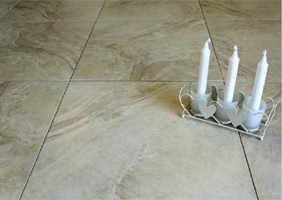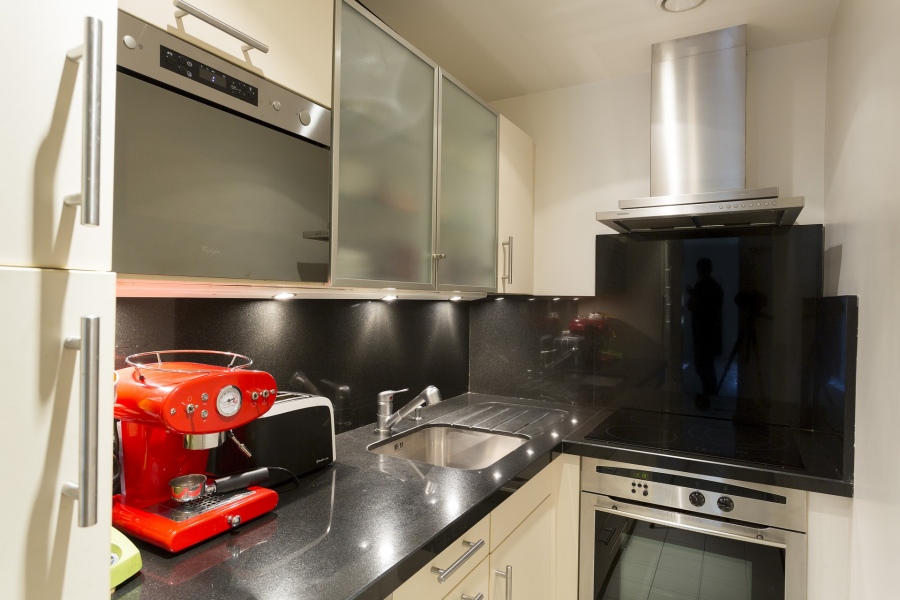Tiling with any material can be a daunting task – particularly natural stone tiles, which require that little bit of extra care compared with more common ceramic and porcelain styles.
But never fear – whether you’re a DIY ditz or a regular Tim Allen of home improvements, this handy guide will walk you through the process of preparing, laying out and fixing your new stone tiles for a perfect and professional-looking finish.
1. Prepare The Sub Floor Properly
Always ensure that the sub floor is dry and clean, as well as clear of any dust or debris that might affect the tile fixing process later down the line. It’s also important to note that there are different preparation procedures depending on the type of flooring you have.
If you have concrete or cement & sand sub floors and have laid down new creed, this should be left for two to four weeks before you start tiling. Stone tiles can also be laid on wooden timber flooring, but you need to be sure it can carry the load. Strengthen wooden flooring by overlaying with 9mm plywood, screwed down at 200mm intervals and finished with one coat of primer.
2. Start Laying Out Your Stone Tiles
Before you start cutting tiles or laying down adhesive, you should always tentatively lay out your tiles to consider things like the shape and size of the room, as well as your tiling pattern. Start by drawing a line using chalk down the centre of the room with the door at one end and the opposite wall at the other.
Measure the line and find where the ‘centre point’ is, and lay down tiles (not fixed) to find out how many whole tiles are needed.
3. Begin Cutting & Fixing The Tiles In Place
When cutting tiles, you should use either an angle grinder or diamond cutter when cutting your stone tiles though the former will be essential if you need curved cuts. Check your chalk marks to see how many whole tiles you need, and to assess the sizing of cut tiles.
When your tiles are ready to be fixed to the floor, you should start by applying your chosen adhesive spread over a small area of about a metre square at a thickness of no more than 10mm – note that the direction of application should be the same across the whole floor.
Then apply some adhesive to the back of the tile before it is laid to ensure good contact between the tile, adhesive and the floor. Apply the tile in a firm, twisting motion to remove any air pockets, and have a spirit level handy to check the tiles are straight.
4. Seal Your Tiles First For Protection
While it’s tempting to move onto grouting as soon as your tiles are down, you should always seal the tiles before you grout. Sealing your natural stone tiles is absolutely vital to ensuring that they’re protected, will be able to withstand wear and be able to last you as long as possible.
Unlike ceramic and tiles, which are popular for both walls and floors, they are not fired and do not benefit from the same treated surface – neglecting to seal your stone tiles will expose them to wear and water damage. There are specific products designed to be used with stone tiles, though any good quality sealant will do the job. Make sure, once you’re done, you wipe down the tiles with a wet sponge to remove any excess
5. Grouting & Final Touches
After at least 12 hours (though 24 hours is preferable, if possible) you can begin the final touches to your wonderful new stone tiled floor. This starts with the grouting of the joints in between the stone tiles – there are a number of grouting products available which are specifically suited towards stone tiles, so it’s important to make sure you use the right product to be used with your tiles.
Apply the grout using a pointing process, and work in small areas of no more than two square metres at a time. Be sure to wash off any surplus grout using a grout sponge as soon as possible – once dry, this residue can be incredibly difficult to remove. Once the grouting has dried, give the floor a full sweep over to remove any dust, dirt or dried grout residue.
6. Relax & Admire Your New Tiles!
All that’s left for you to do now is step back and admire all the hard work you’ve done – providing you’ve followed these tips, as well as any manufacturer instructions and advice given to you by the tile supplier, then you should have a perfect finish that you’ll love for years to come. Enjoy!
Featured images:

License: Image author owned
 License: Image author owned
License: Image author owned
This post was written by Tom McShane – avid writer by day, lover of natural building materials by night (and the weekends too). Renovating his kitchen was a real challenge, but seeing a perfectly laid natural stone floor, with tiles from the Tile Choice warehouse, made it all worthwhile.





